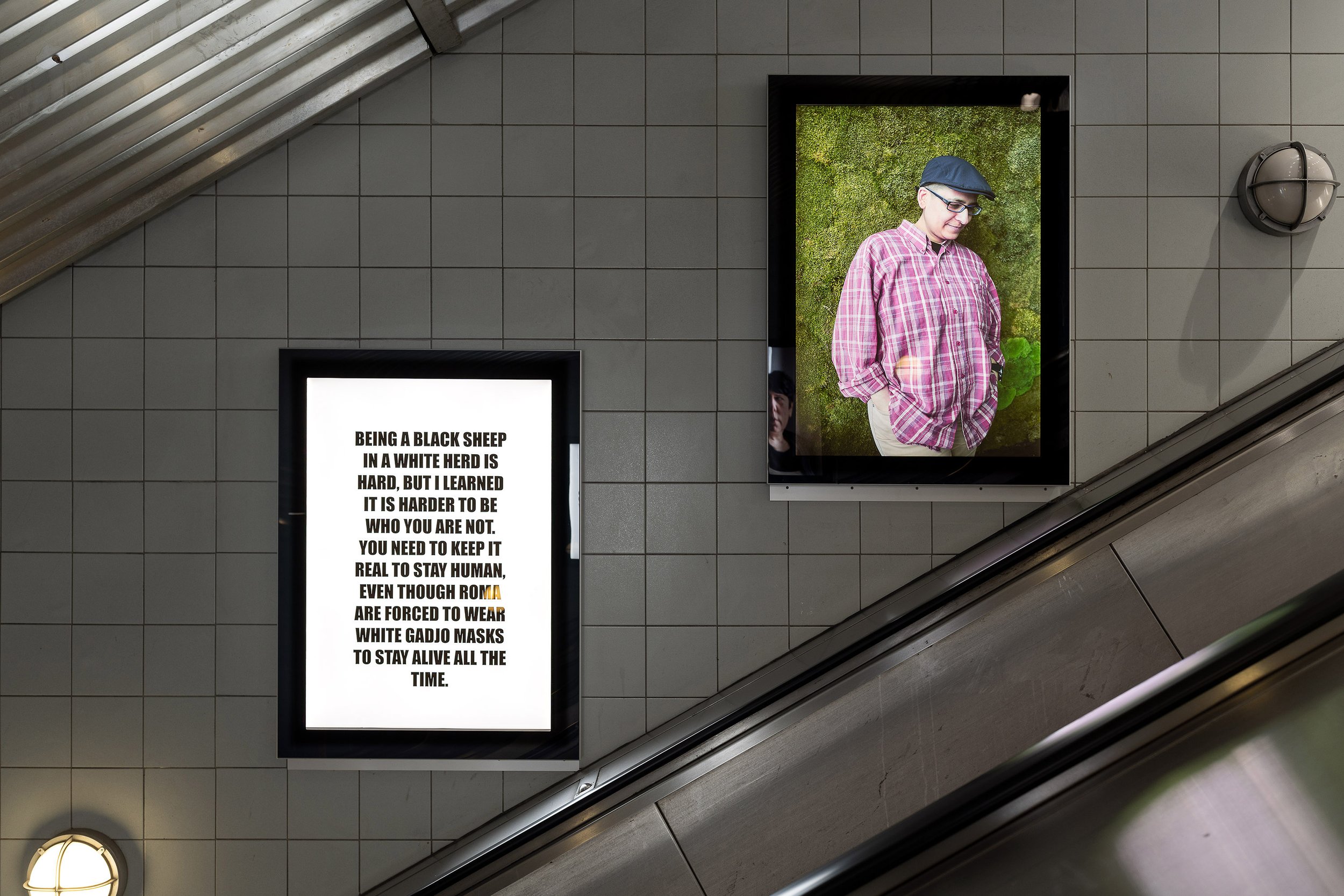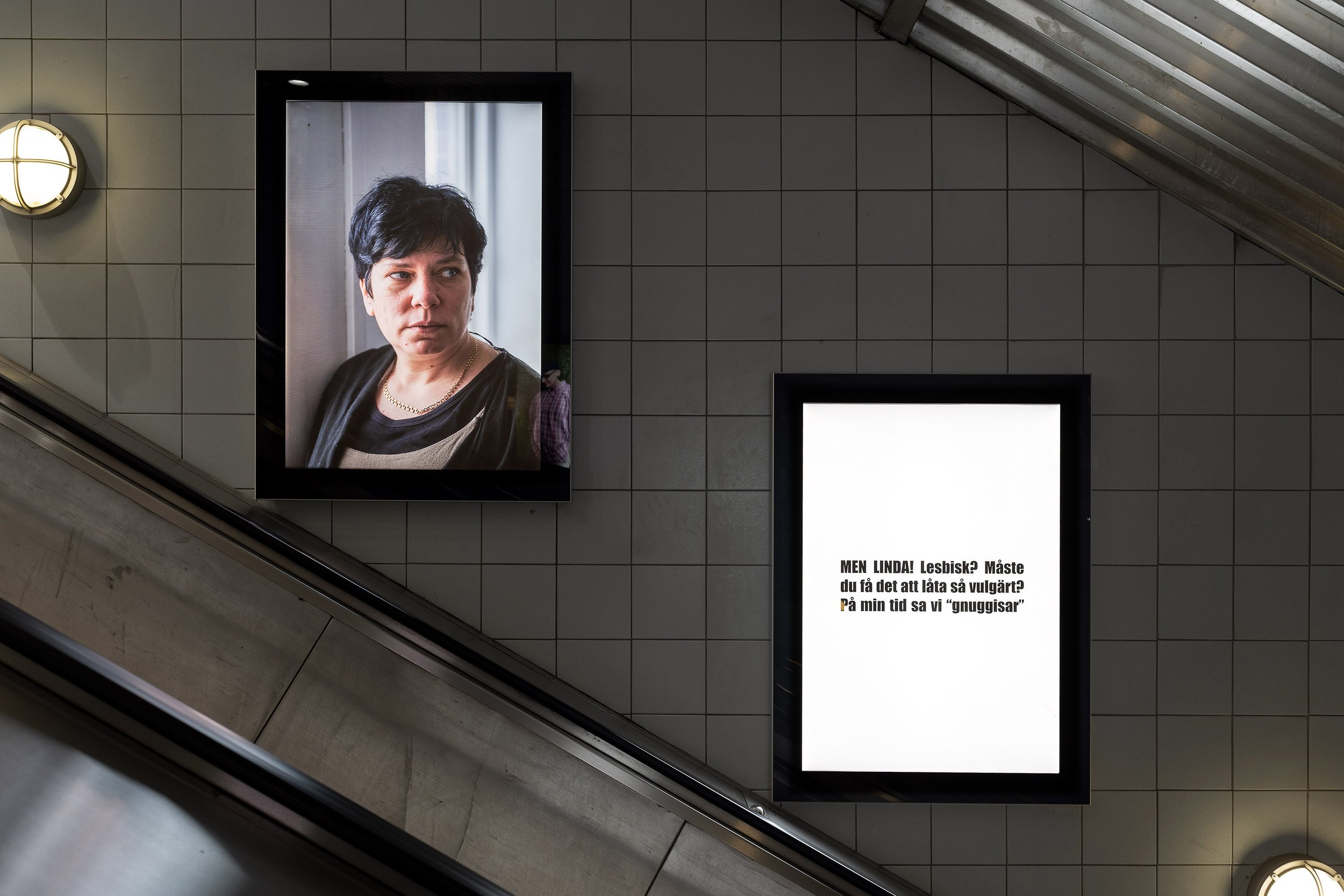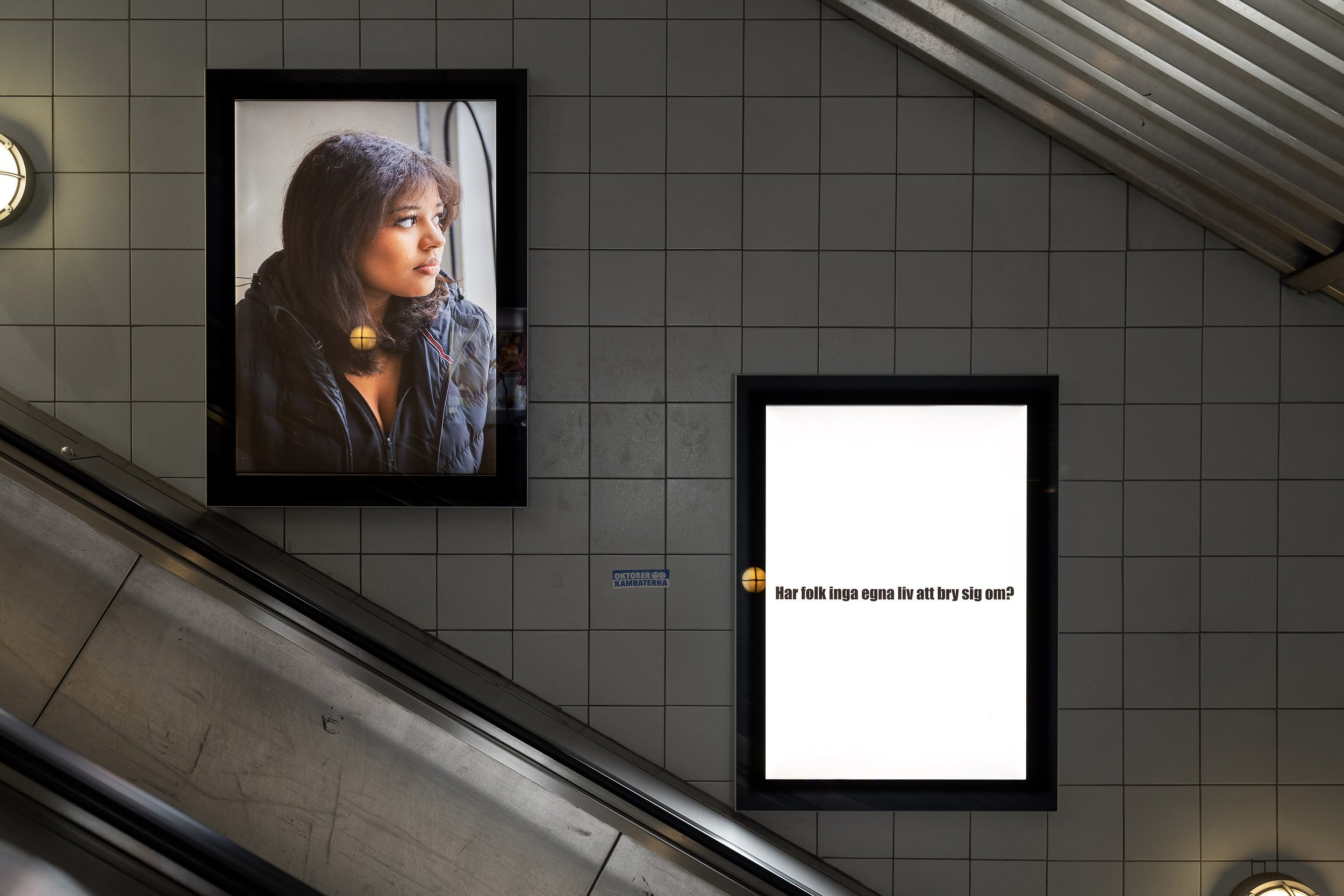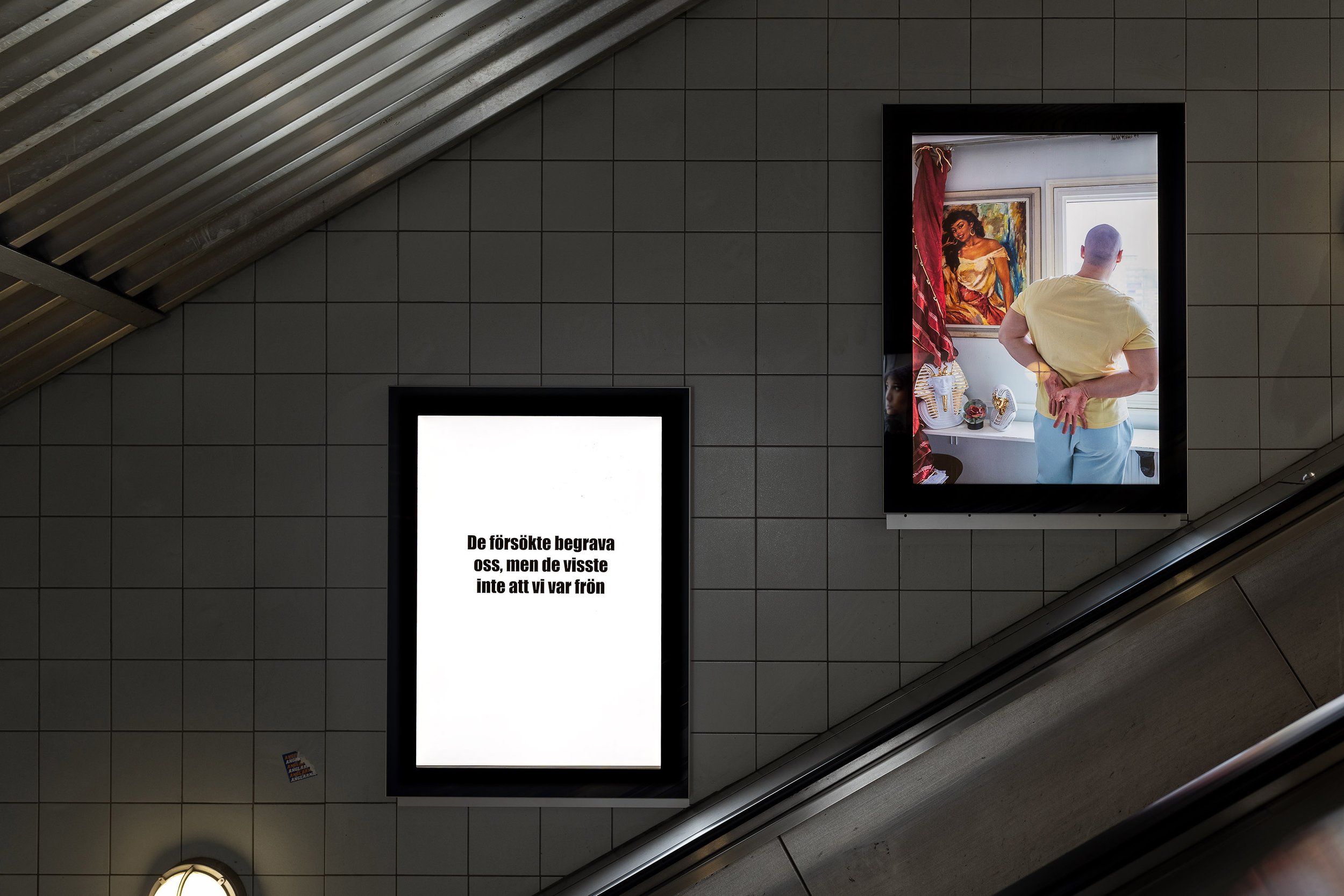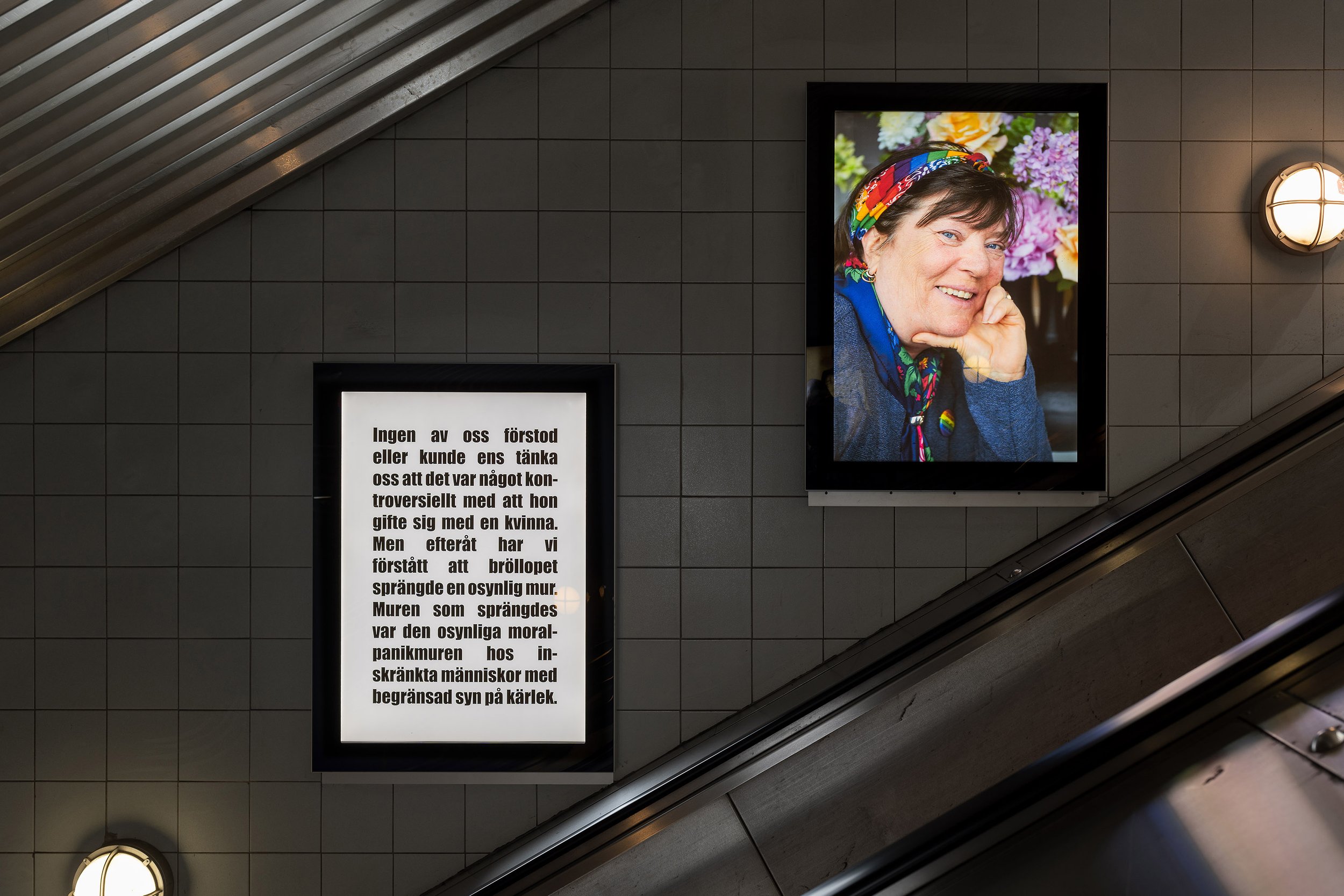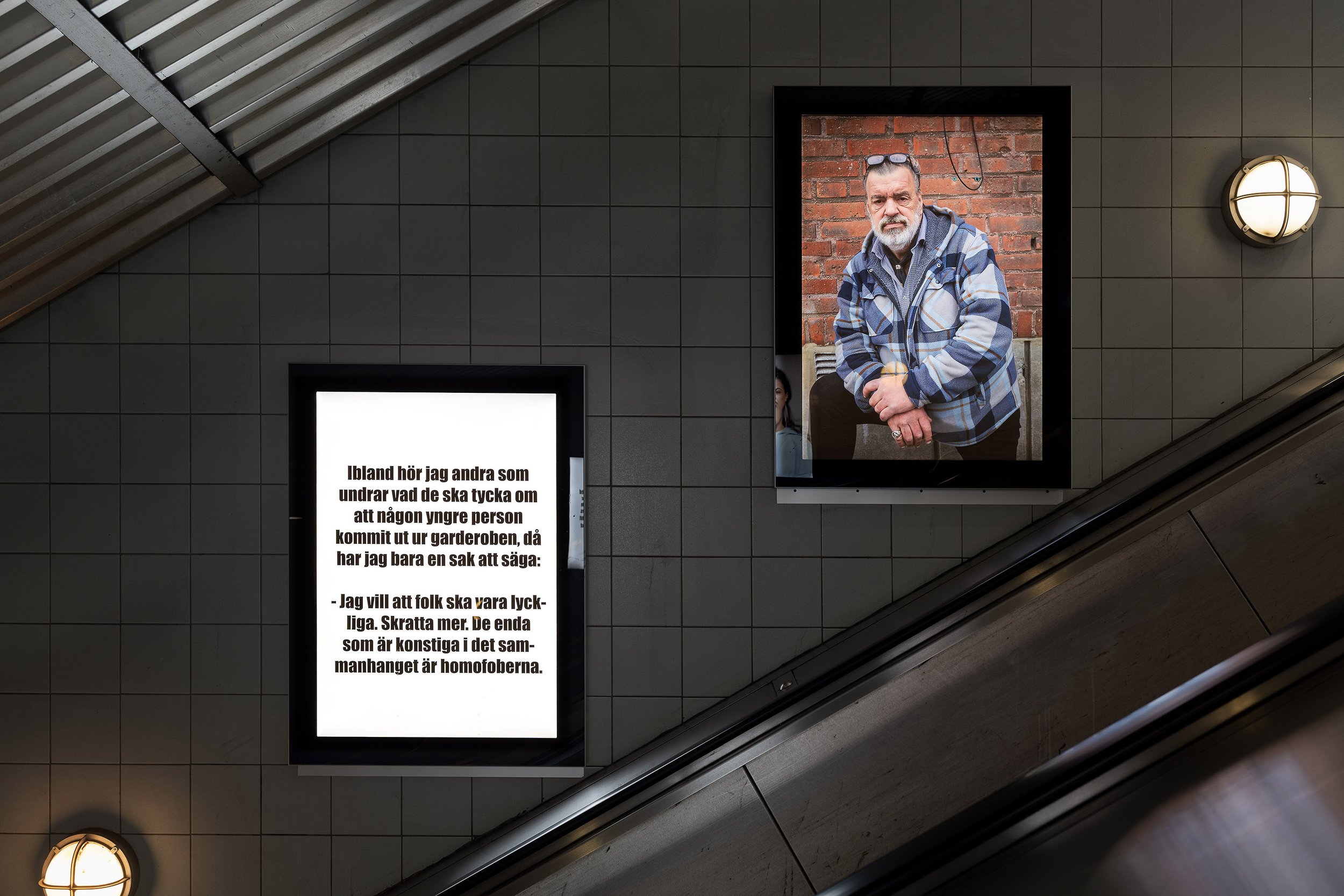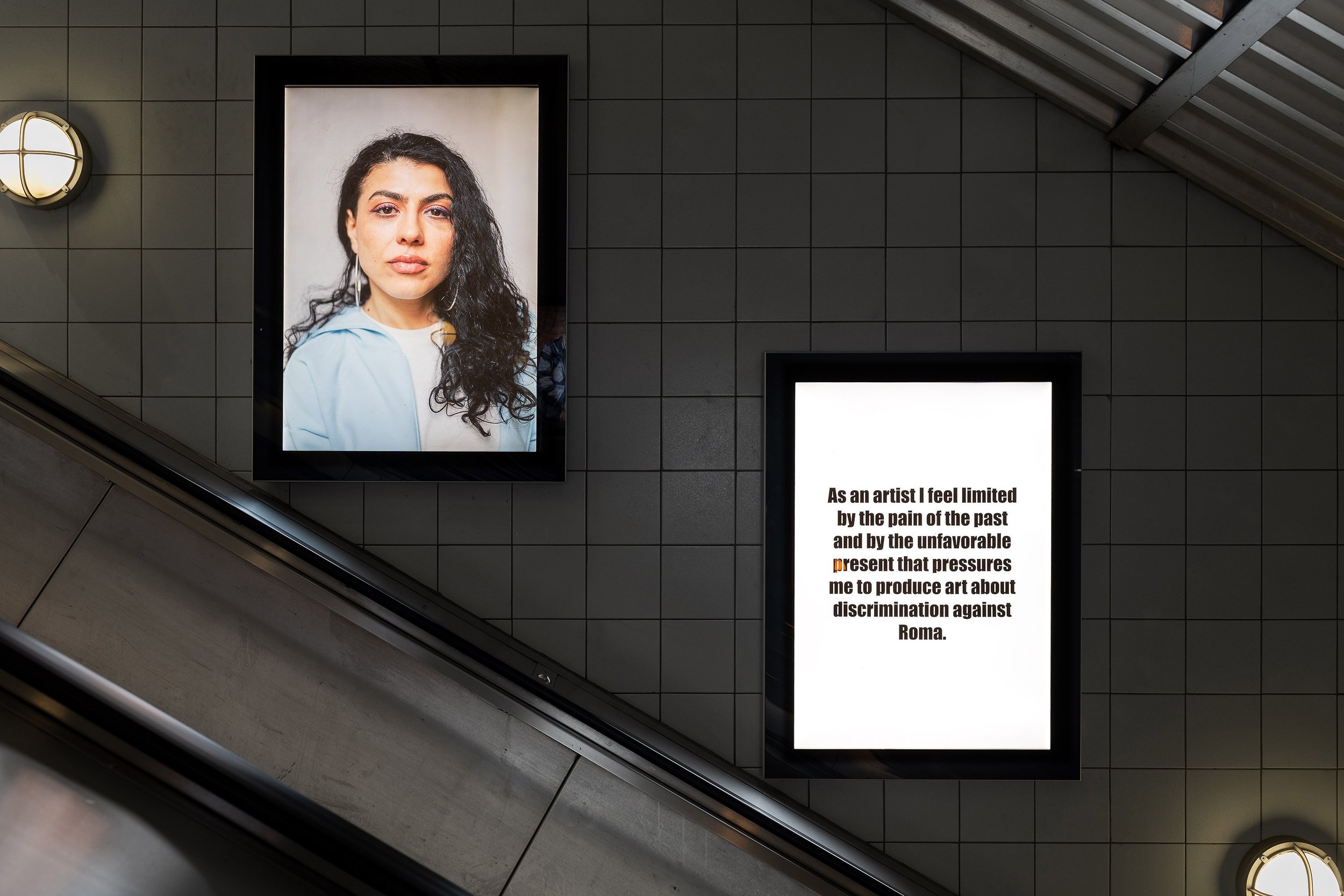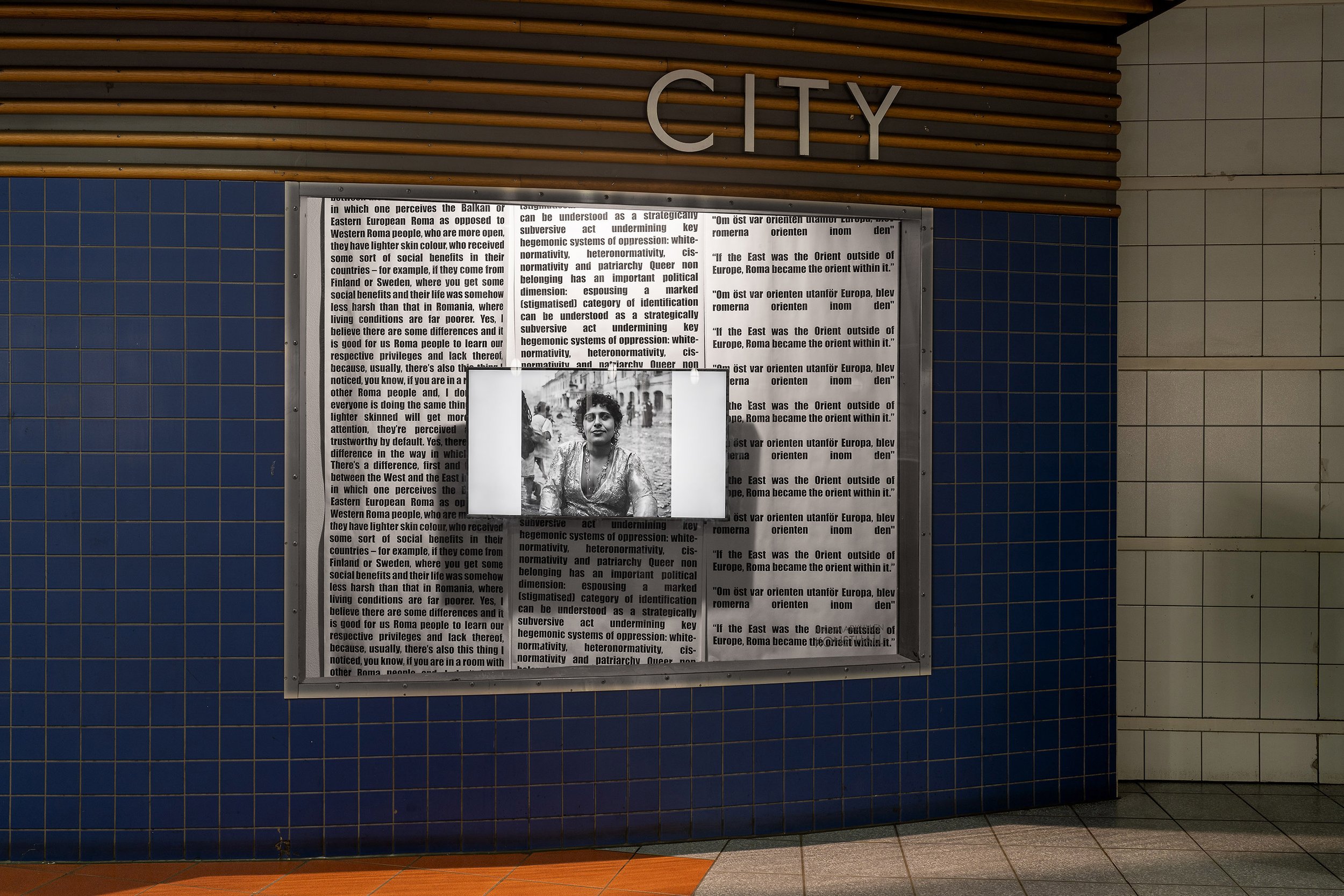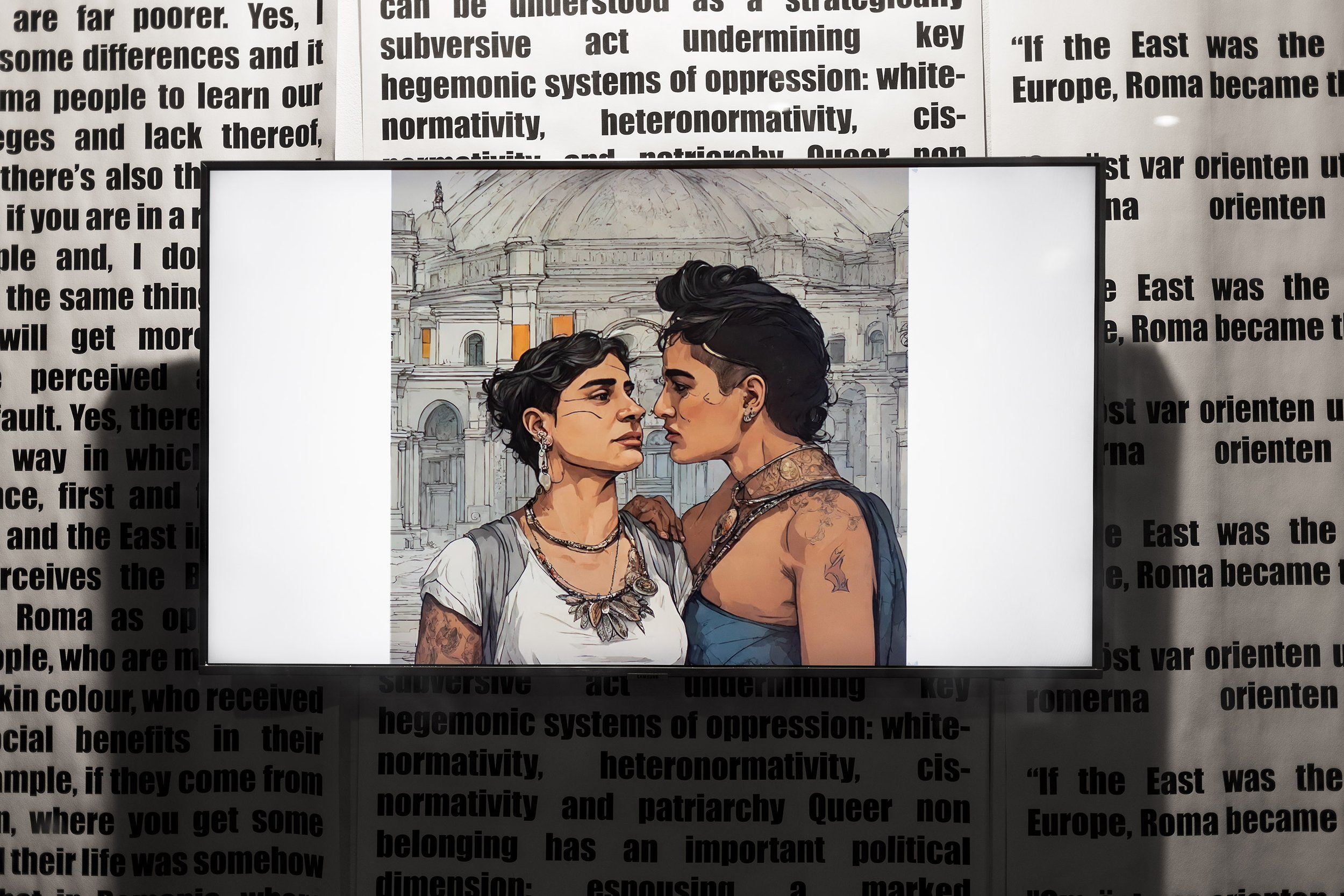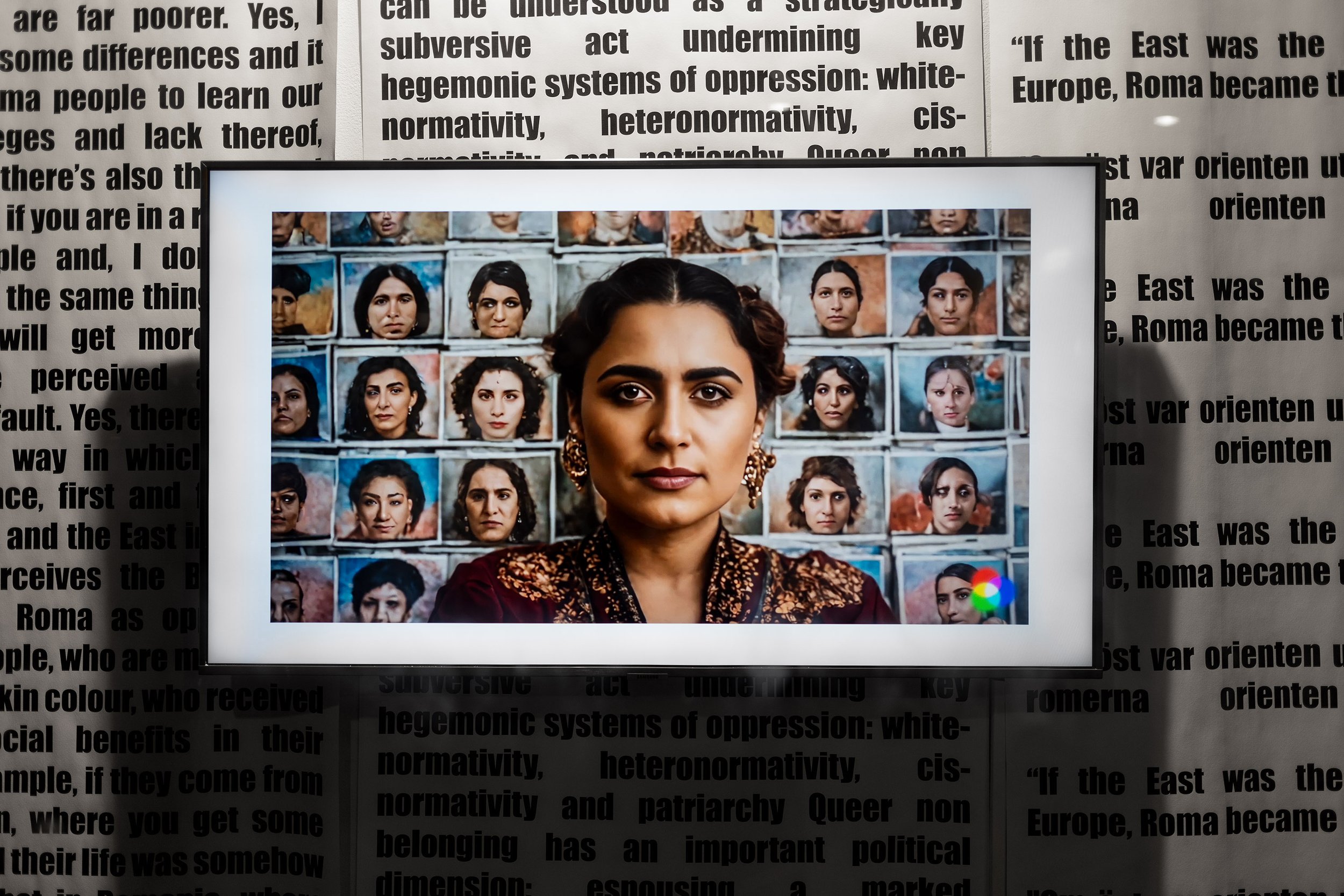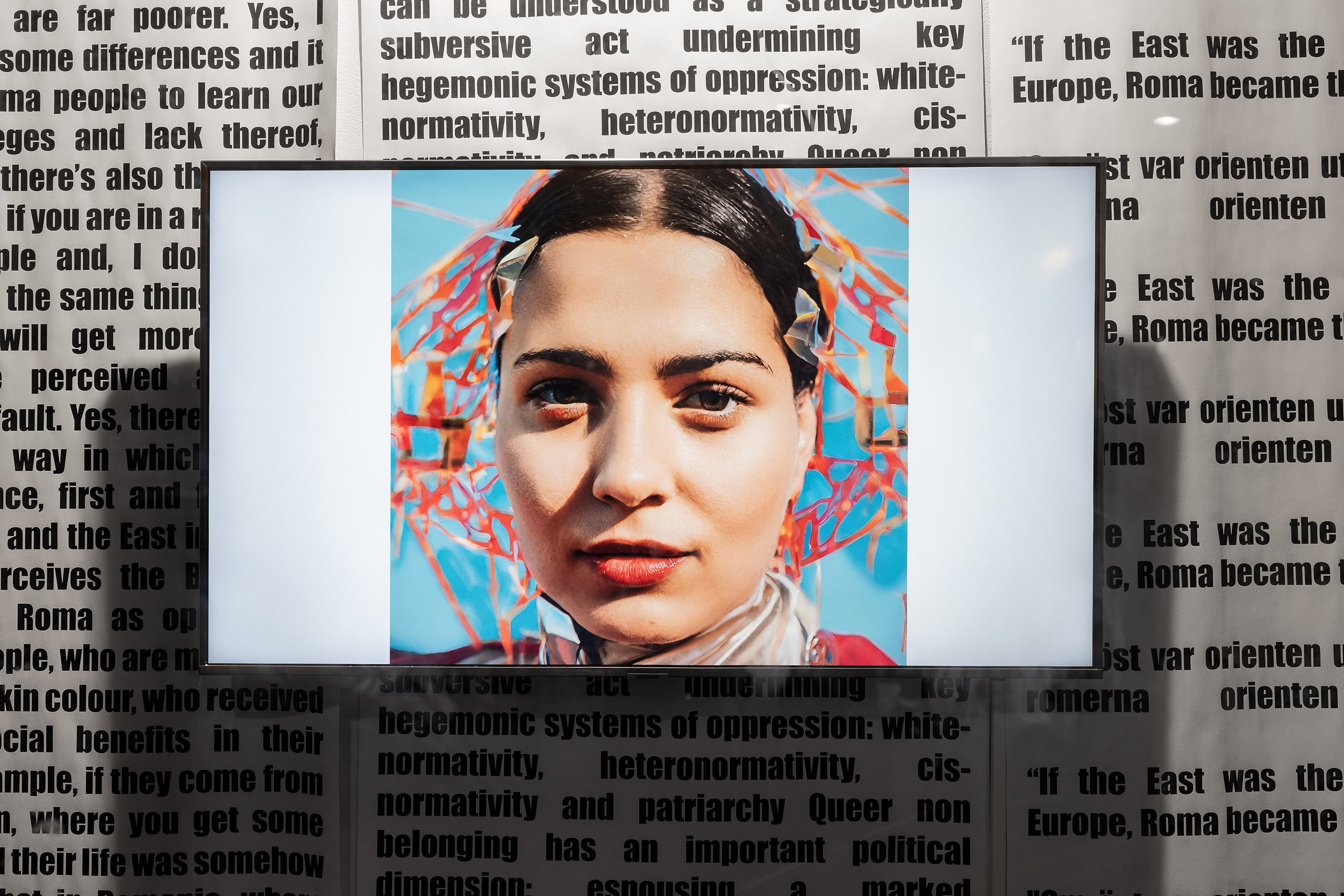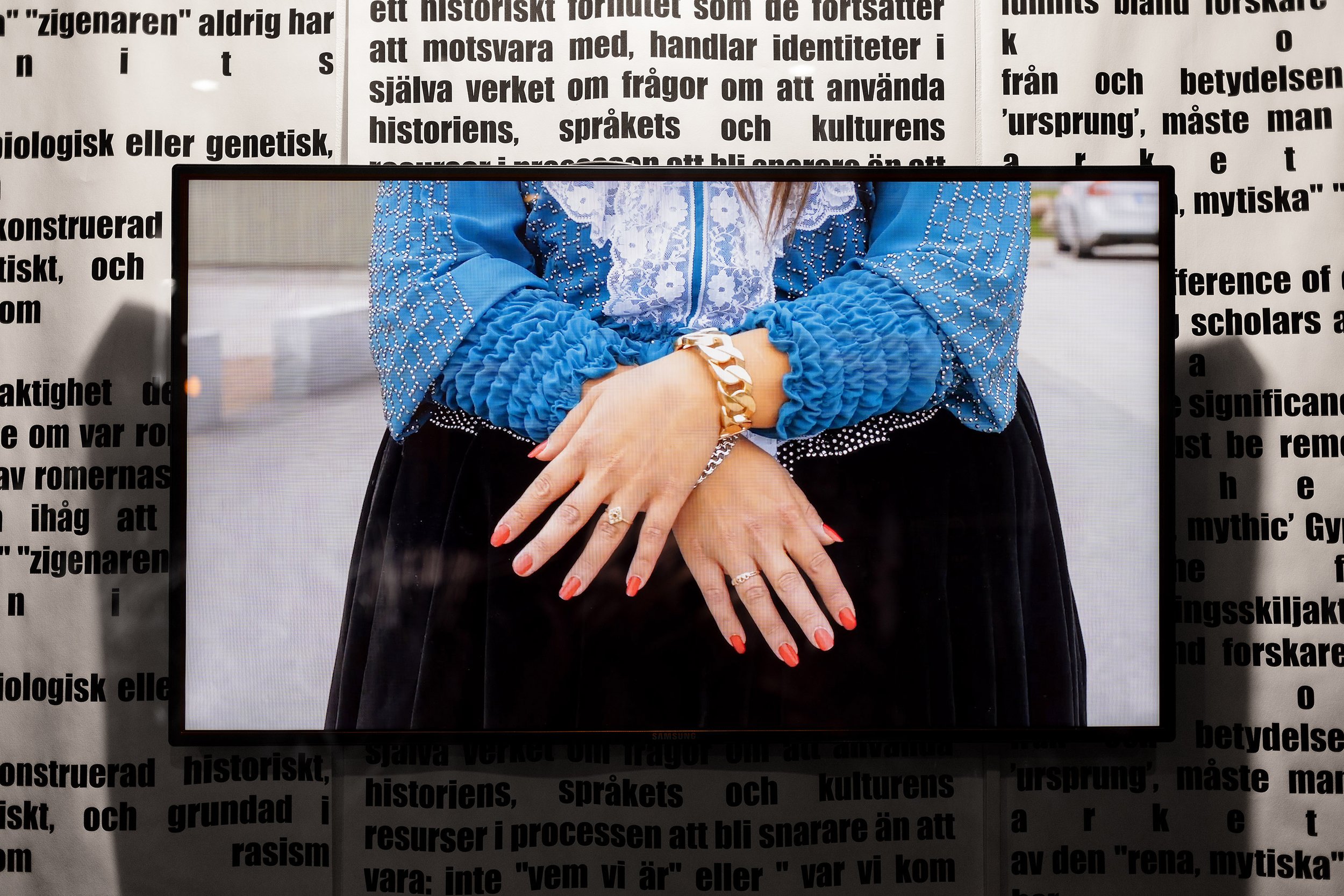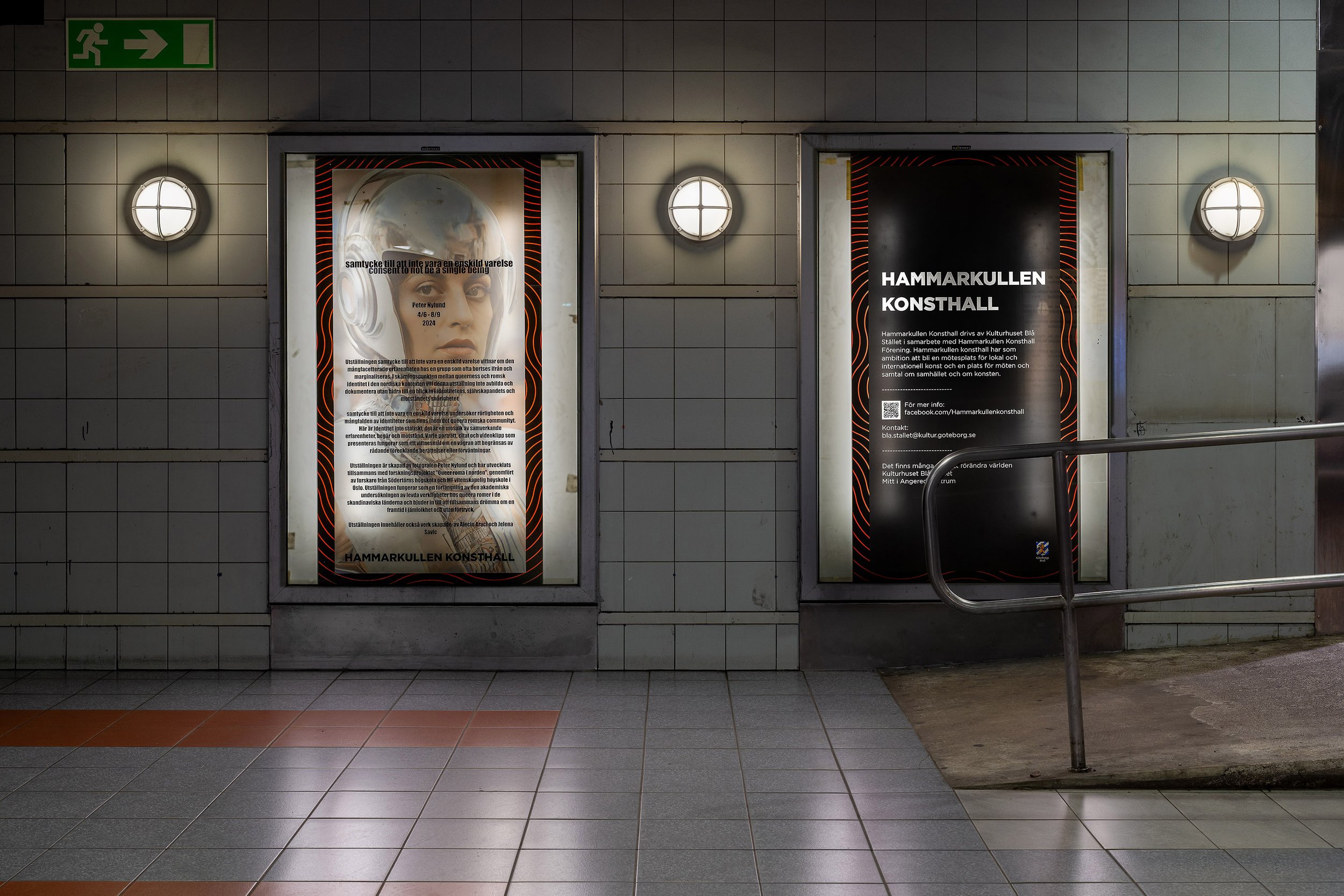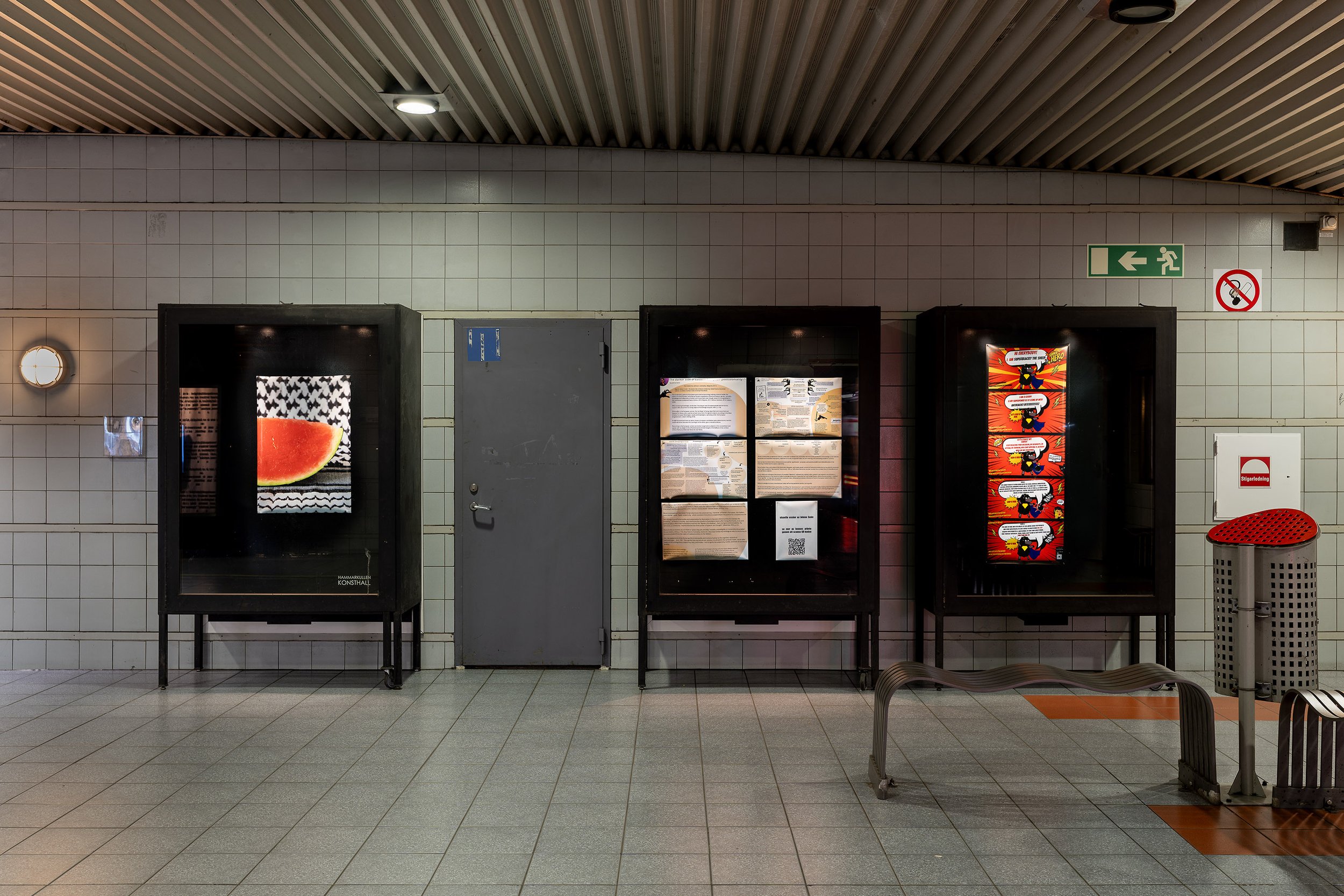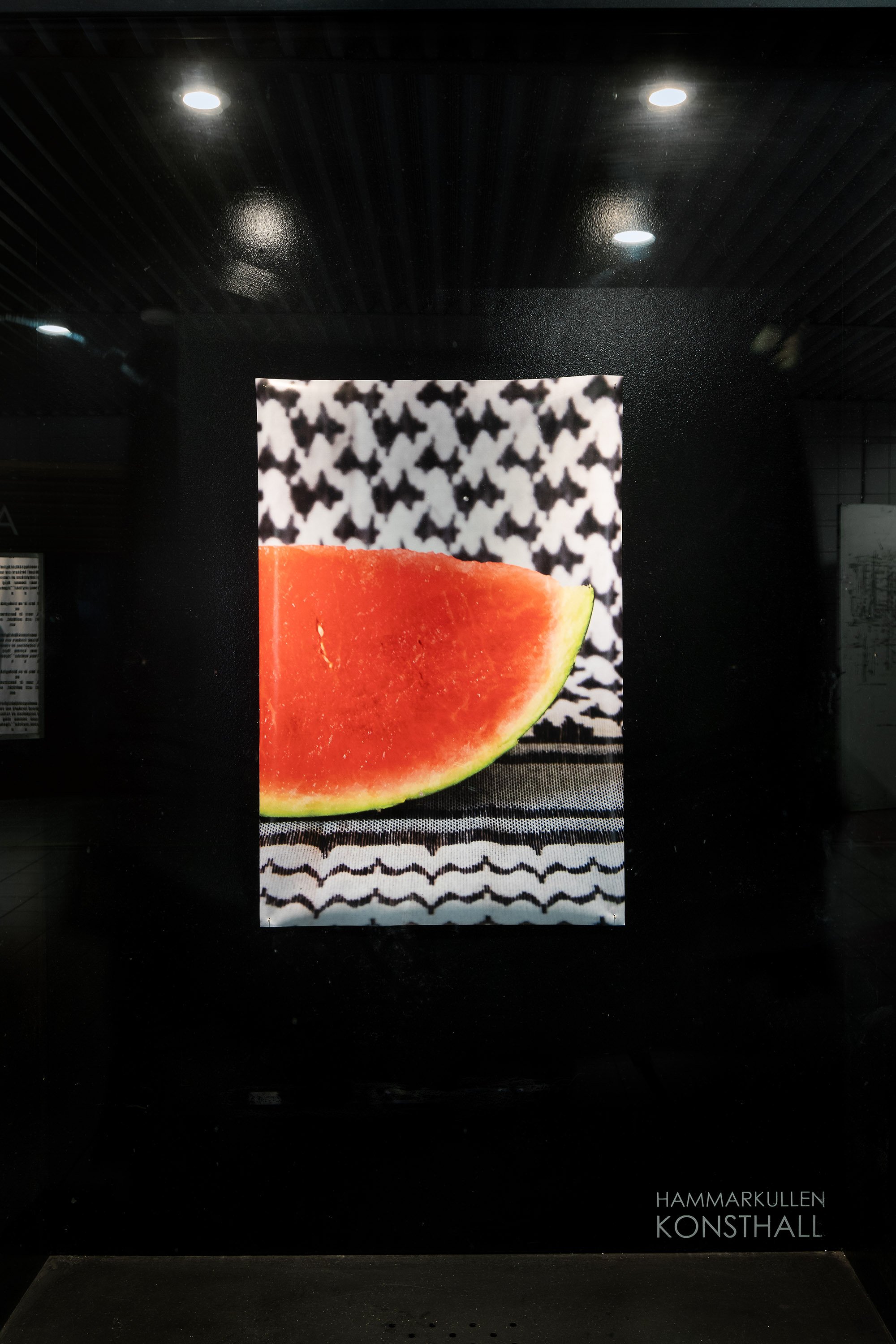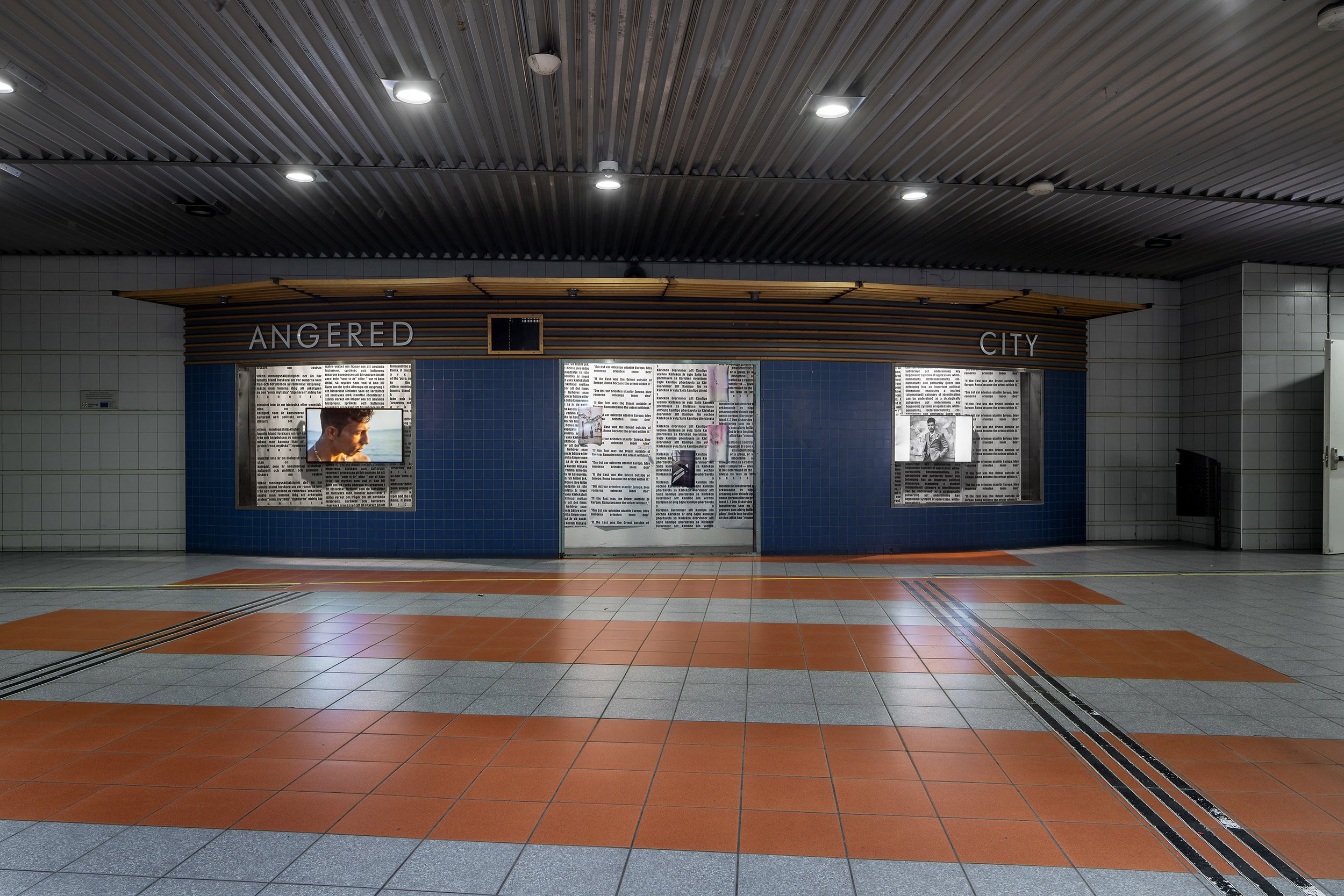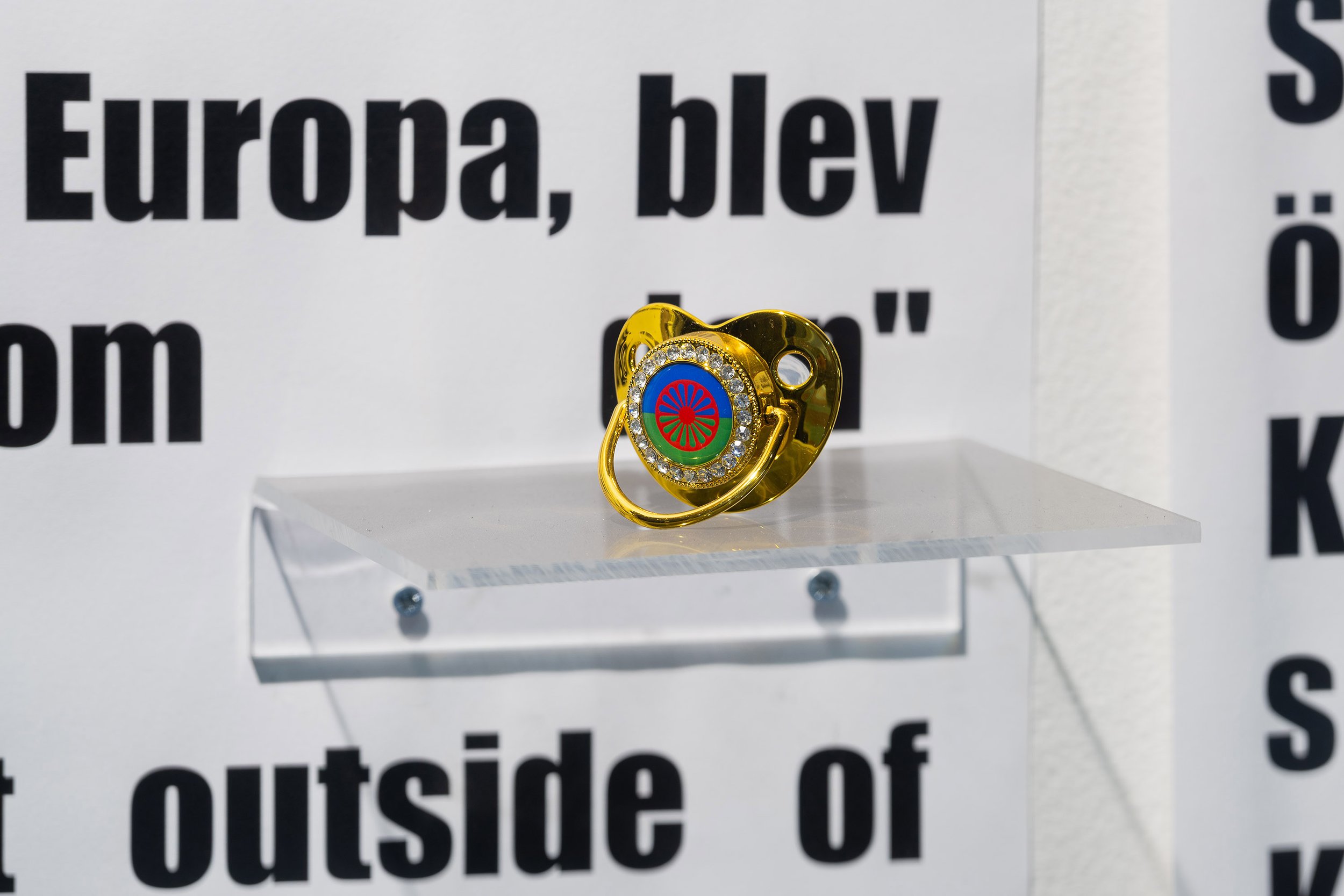The exhibition Consent Not to Be a Single Being (SW: samtycke till att inte vara en enskild varelse) bears witness to the multifaceted experience of a group often marginalized and overlooked in broader societal narratives. At the intersection of queerness, Romani identity, and the Nordic context, this exhibition aims not just to be a collection of statements and faces, but a glimpse into the complexities of identity, self-creation, and resistance. In this extension exhibition, I was able to unite aspects of my artistic practice (photography, AI research, curatorial methods) that had up until this point seemed separate, and also included works of Romani artists Alecio Araci and Jelena Savic.
Based on the groundbreaking research project Queer Roma in the Nordics, conducted by researchers from Södertörn University and MF Norwegian School of Theology, Religion and Society in Oslo, this exhibition serves as an extension of the academic investigation into the lived realities of queer Roma in the Scandinavian countries.
At the heart of this further exploration lies the concept of Romafuturism—a concept that challenges dominant narratives by imagining alternative futures rooted in Romani culture, history, and imagination. Through the lens of Romafuturism, we are invited into a world where past, present, and future merge, offering a profound reimagining of what it means to exist as both Romani and queer in the Nordic landscape.
The exhibition’s title is a concept borrowed from poet and theorist Fred Moten, who uses the term to describe the Black experience. Like the Black experience, the Romani experience in Europe is shaped by a history of slavery, marginalization, and violence. The concept thus offers a perspective on identity that is not limited to a single, essentialized form but is instead dynamic and multifaceted—resisting categorization and restriction. By “consenting not to be a single being,” individuals acknowledge the interconnectedness of their existence with others and blur the lines between self and other, individual and collective.
Against this historical backdrop, the concept of consent not to be a single being offers a framework for understanding queer Romani identity as fluid, interwoven, and resistant to fixed categorization. Just as Moten argues for the multiplicity within Black identity, we can also recognize the diverse and multifaceted nature of Romani identity, encompassing a range of cultural, linguistic, and historical influences.
Consent Not to Be a Single Being explores the mobility and diversity of identities within the queer Romani community. Here, identity is not static; it is a mosaic of interconnected experiences, desires, and resistances. Each portrait, quote, and video clip presented within this space serves as a testimony to a refusal to be confined by prevailing reductive narratives or expectations. It is a space where the past informs the present, and the present paves the way for a future of radical inclusion and celebration of diversity. Above all, we recognize the deep humanity that unites us all—a shared longing for understanding and for the freedom to exist authentically, without apology and without limitation.
